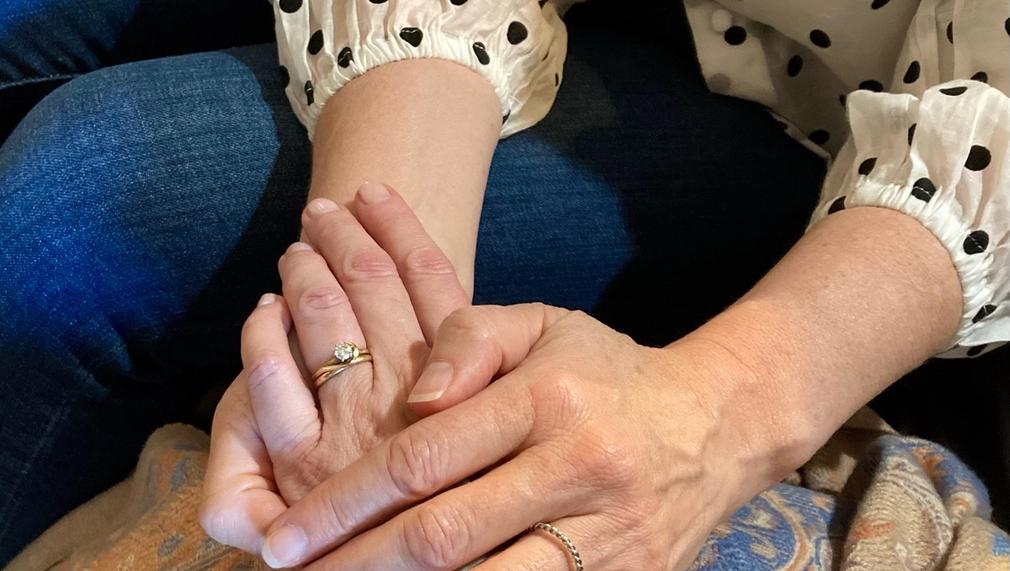Peer Support to Ease Widowhood Isolation
Widow to Widow is a volunteer-driven organization that provides one-to-one peer support to ease the isolation and loneliness of widowhood.
An oftentimes forgotten community, widows experience continual anguish for years. Attending bereavement groups can be overwhelming and individual grief therapy isn’t always enough. Our widow buddy system thoughtfully matches experienced widows with the newly bereaved, providing the crucial emotional support of shared experience through phone calls, texts, emails, individual virtual meetings, and postal mail.

What is the primary issue area that your application will impact?
Social support networks
In what stage of innovation is this project, program, or initiative?
Pilot or new project, program, or initiative (testing or implementing a new idea)
What is your understanding of the issue that you are seeking to address?
After losing her husband to cancer, Widow to Widow Founder Julie Ann Taylor struggled to find a bereavement group. The first had a four month waiting list. The second was too large, making it difficult to hold the grief of others while shepherding her own. The third canceled meetings and the fourth cost money. Finally, she found a group that seemed to fit. There she met fellow widow Leslie Cohn. As the first anniversary of Julie’s husband’s passing approached, Leslie compassionately reached out to Julie through supportive texts and cards. It was Leslie’s one-to-one peer support that became a pivotal turning point for Julie during this especially sensitive time. As Julie began to meet more widows, she heard similar stories regarding the obstacles in finding a solid group or confidante with shared lived experience. There was clearly an authentic community need for a support program where widows could help each other rebuild strength and cope with this new version of everyday life.
Describe the project, program, or initiative this grant will support to address the issue.
In today’s world, the COVID-19 pandemic accelerated trends in social disconnection. Social networks are getting smaller as well.
In our burgeoning epidemic of loneliness, half of Americans report feeling lonely.
This scourge is associated with a greater risk of cardiovascular disease, depression, anxiety and premature death, paralleling statistics associated with widowhood. Already on shaky ground, widows are left doubly vulnerable.
Our program will train 20 volunteer widows in peer-to-peer program best practices and thoughtfully match each with five incoming widows. Our peer supported program will allow widows to connect with each other on a weekly basis, and especially during anniversaries, birthdays, and holidays. Because so much disappears when a spouse dies, Widow to Widow will highlight special projects. One such project is the “Share the Love" Valentine’s Day Campaign (piloted in 2024). Together with community partner Peony & Plum Floral Design, a minority woman-owned studio in Los Angeles, we’ll be able to bring a little surprise comfort each February 14th by delivering bouquets to widows nominated by friends and family.
Research shows that peer support is helpful to the bereaved by reducing grief symptoms and increasing well-being and self-empowerment. Studies also show benefits to the providers of peer support, including increased personal growth and positive meaning in life. This communal care model of reciprocal peer support is Widow to Widow’s unique strength.
Describe how Los Angeles County will be different if your work is successful.
Our vision at Widow to Widow is to create a broad network of widows supporting each other, creating a safe place for widow expression.
Using our widow “buddy system” we will improve the lives of widows by decreasing isolation and instilling a sense of belonging across the social fabric of Los Angeles County.
The future of the program will rely on the natural progression of incoming widows transitioning into volunteers themselves, thereby expanding and sustaining this social support network. The Widow to Widow model will continually mitigate the impact of first and secondary losses, and the invisibility associated with widowhood.
To do this, our most immediate goal is the successful, formal launch of Widow to Widow. Our longer term goal is to work with like-minded health organizations to expand the program locally, state-wide and nationally, becoming a successful model that demonstrates the powerful positive impact we can have in contributing to a culture of connection.
What evidence do you have that this project, program, or initiative is or will be successful, and how will you define and measure success?
During our first year at Widow to Widow, we will define success by creating a website as our primary networking interface, designing an intake process form for incoming widows, and creating a volunteer training course on widow support protocols.We will also enlist a minimum of 20 volunteer-trained widows to support five bereaved widows each, thus having peer-to-peer support for a total of 100 widows in our network. Additionally, we will identify three health partners to direct widows to our organization. We will measure success by creating an internal evaluation process that includes administering pre and post assessment surveys at baseline, six months and one year.
Our long term goal is to partner with an outside evaluator such as UCLA Psychology Department or National Association of Social Workers to determine program effectiveness.
Approximately how many people will be impacted by this project, program, or initiative?
Direct Impact: 120.0
Indirect Impact: 240.0